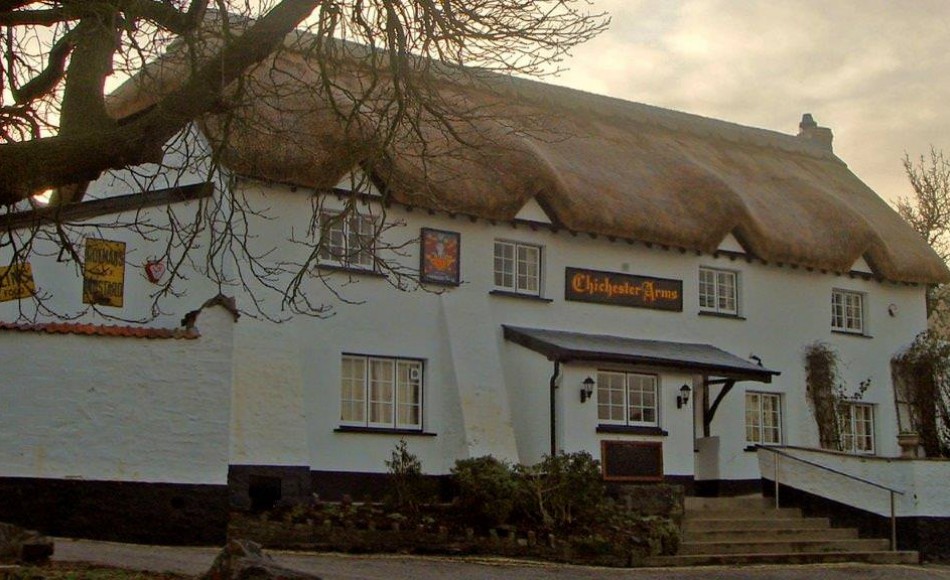RESPONSIBLE DESIGN – Understanding the risks of wood burners and open fires in thatched buildings
— 24 Feb 2017
Chichester Arms - clearing up after thatch fire
Chichester Arms - remains following thatch fire

Chichester Arms - repaired and rethatched 2005
Stooked sheaves for thatching dried in the field
Tied straw yealms forming the first (brow) course at the eaves of a roof
Director at Jonathan Rhind Architects and Chartered Architect, John Alexander, has been involved with the Conservation of Traditional Thatch Group (CoTTG) for several years.
A specialist group of conservators, thatchers and heritage professionals, the CoTTGs main aim is to establish better conservation practice in the re-thatching and maintenance of thatch. It aims to engage with the issues surrounding this topic and to work with anyone who owns or is responsible for a historic, thatched building.
Each year, a significant number of important historic buildings, mainly houses, are lost to thatch fires, therefore a greater understanding of what causes these fires and how to prevent them is urgently needed.
In 2014, the CoTTG and Historic England (HE) instigated better research into thatch fires - funded by HE and the NFU Mutual Insurance Society - following a key CoTTG meeting where thatchers, insurers, loss adjusters and heritage professionals were brought to the same table to discuss their real-life experiences relating to fires on thatched roofs. This discussion was informed by a survey of 148 thatch fires between 2008 and 2016.
The Fire Protection Association has now started this research with some significant initial findings:
Temperature and speed of flue gases – It proved very difficult, even with a 7KW wood-burning stove fuelled and stoked aggressively, to get gas / smoke temperatures up to a level where they alone could start a fire in the thatch; externally the brick of the chimney never got above 80oC.
Flue defects - As long as the flue remains un-obstructed (swept), the heat / smoke takes the line of least resistance up the flue, even if there are holes or defects in the flue or the flue liner. The heat does not naturally deflect through a defect in the chimney, where it may get to the thatch with embers which would ignite the roof.
Spark / ember ejection - Although more research is required, this is proving the most likely reason as to why thatched roofs catch fire. This is directly affected by the design of the wood burning stoves and the nature of the fuel. It is likely that this research may lead us into recommendations on the design of flues and flue liners, as well as the design of wood burning stoves and fire boxes.
As specialist conservation architects, our team have worked on a number of thatch properties. To find out more about our work on historic buildings like these, take a look at our case studies.
For more information about the Conservation of Traditional Thatch Group, visit the website.